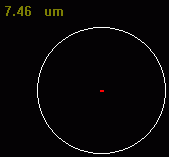
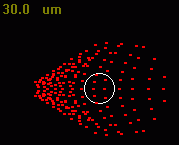
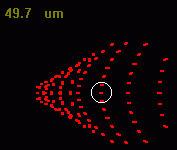
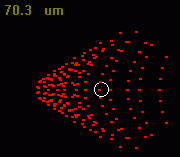
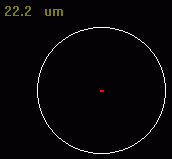
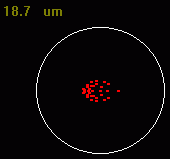
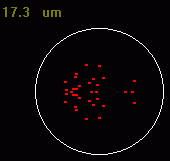


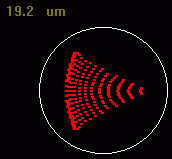
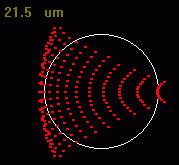
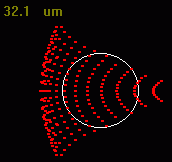

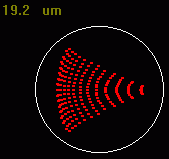
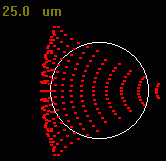
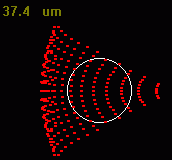
Strel Ratios for 4" design at 0.6° off-axis.
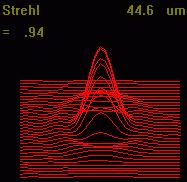
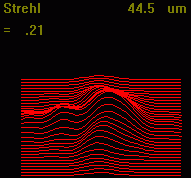
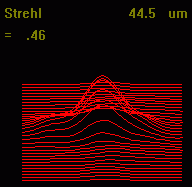
 |
 |
 |
 |
 |
 |
 |
 |
 |
 |
 |
 |
 |
 |
 |
 |
Strel Ratios for 4" design at 0.6° off-axis. | |||
 |
 |
 |
|
 Here's the basic layout of the scope as a 4" off-axis design. The large block at the left is the light source, the block of gray and white above the ray lines is the secondary and the rectangle at the bottom with the number 1 next to is is the observation screen which has the ability to move itself to the focus position. It's presently at an angle to inspect the shape of the image point for that angle. As noted elsewhere, the angle didn't matter for the quality of the image hardly at all. As a result, no pictures were taken of the various results as you wouldn't see any real difference in the result.
Here's the basic layout of the scope as a 4" off-axis design. The large block at the left is the light source, the block of gray and white above the ray lines is the secondary and the rectangle at the bottom with the number 1 next to is is the observation screen which has the ability to move itself to the focus position. It's presently at an angle to inspect the shape of the image point for that angle. As noted elsewhere, the angle didn't matter for the quality of the image hardly at all. As a result, no pictures were taken of the various results as you wouldn't see any real difference in the result.
The mirror at the right is the full 10" size as this makes it easy to look at the results of just a part of the mirror's surface without having to do critical angle settings that would otherwise be needed. The light source was put both in the far position (where it is now) and on the other side of the secondary to inspect for both of the basic designs of an off-axis scope.
What can be seen from this set of images? First off, an off-axis scope is going to be worse in the coma aspect than what a normal on-axis scope will be. To the positive tho, the scope won't have the secondary obstruction that the normal on-axis scope will have. To some, this is a good reason to do an off-axis scope but I tend not to see the such as good. The results of the images of the wavefront error also show that the image quality degrades a fair bit when taken off-axis and you will also note that the Strel Ratio also suffers a lot. All in all, not a good end for all the work needed to make an off-axis scope.
I would suspect that a well baffled scope on-axis will well outperform the off-axis design, at least at this focal ratio. Much longer designs may end up bringing the errors in to where they stay well within the 1/4 wave error but that's another subject.
As another bit of info, I rotated the focal plane by up to 15° but the image didn't change as to the amount of aberration in the image. I didn't inspect for changes of focus but I would suspect that the "normal" angle of the EP will be the best.
If anybody has any further suggestions, feel free to contact me and make comments.